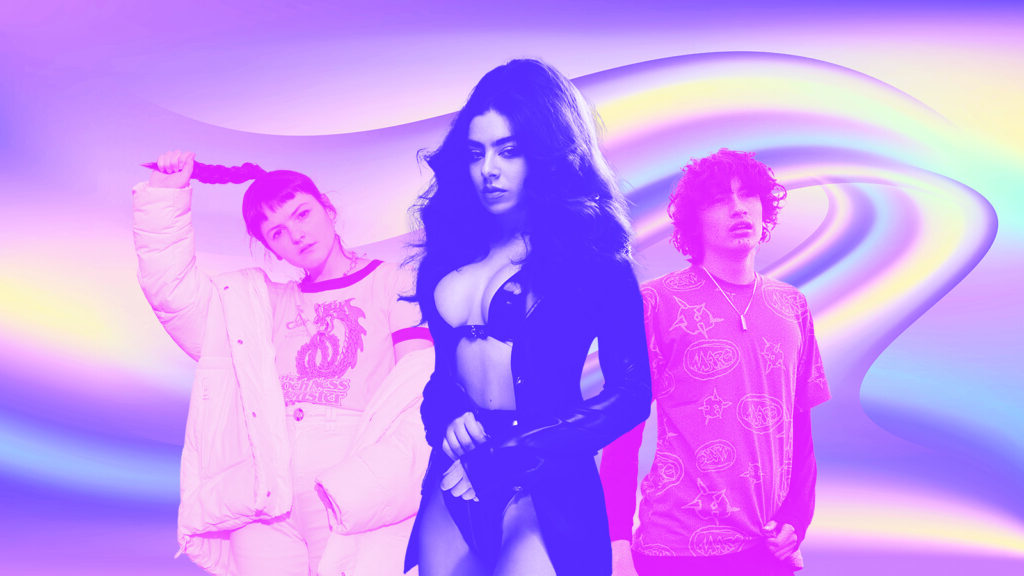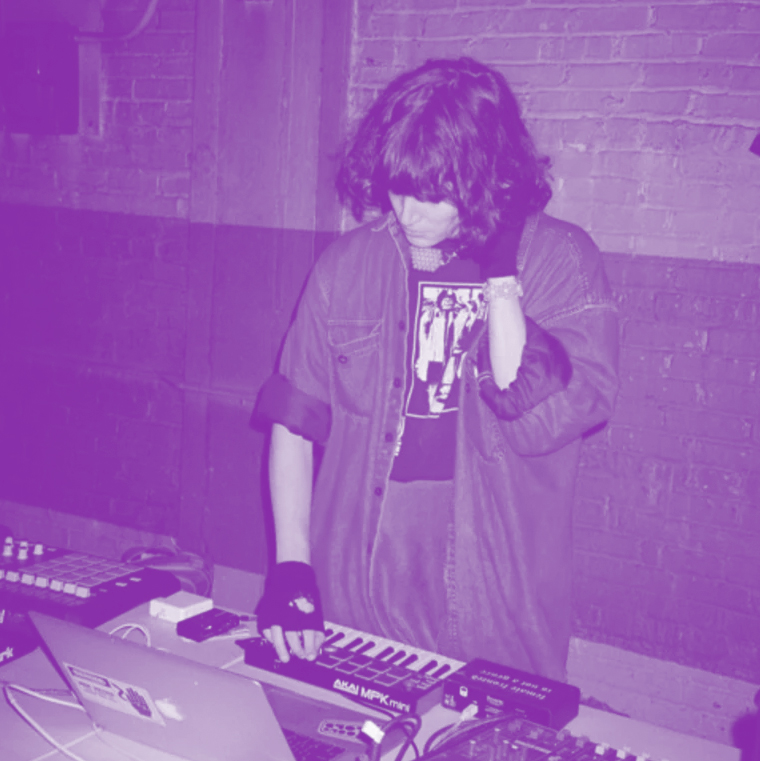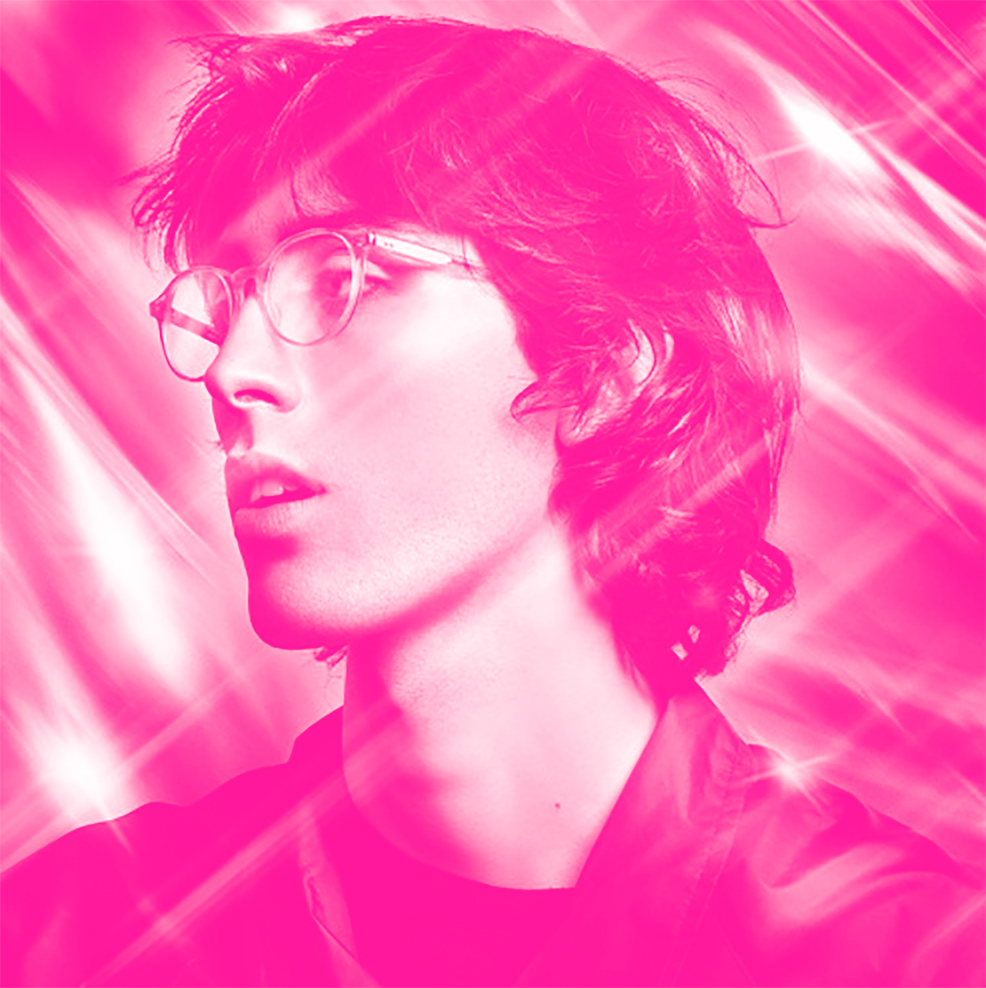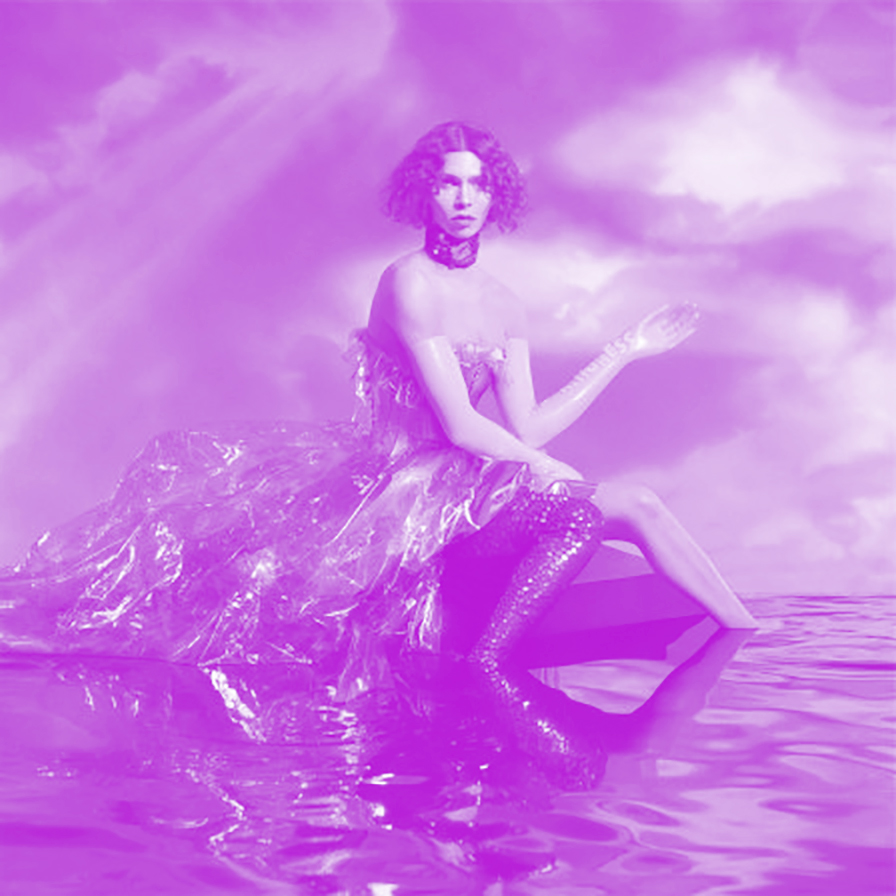What does ‘hyperpop’ mean in 2022?
Two years ago, the online DIY microgenre was the subject of countless articles, social media discourse and record industry bidding wars — but today, most of its artists reject the label. Where does the scene stand now that the hype has died down?
By Anna Cafolla

Comprised of a rotating cast of figureheads, hyperpop artists make digital music pushed to its most flamboyant, most discordant, most spectacular extremes. Over the past two years, the microgenre has had a rapid proliferation, thanks to the runaway popularity of maximalist, mouthy scene birthers, 100 gecs. After zooming through digital superhighways like SoundCloud and Discord (where a small but engaged community proliferated), the microgenre was suddenly being written about in prominent publications and its artists were finding themselves on big playlists by Spotify and Apple Music (a corporatisation that the community passionately contests).
The hyperpop scene led to some serious opportunities for artists in its orbit. Musicians previously operating out of their bedrooms were now signing to major labels and performing sell-out tours, while pop critics were agonising over whether the microgenre had any chance of permanence or impact — a conversation that happened largely without the input of the aforementioned musicians.
Hyperpop spawned myriad memes and online arguments and, as it has metabolised into the mainstream music sphere, digital communities still spar over the genre’s catch-all, reductive name, while the artists originally aligned with the scene resist and transcend its original definition. So where does the hyperpop scene stand in 2022?

Key influences
Although many of the hyperpop artists first profiled by mainstream publications were based in the USA, commentators have pointed to several key UK influences: the PC Music crew, with producer A. G. Cook as a godfather of sorts to an embryonic scene; pop mavens like Charli XCX; and underground-cum-pop-futurists like the late and great SOPHIE. The stratospheric rise of 100 gecs gave the genre a transatlantic moment, spreading across the world to catch critics’ and platforms’ burgeoning interests, as the race to name the new sound reached fever pitch.
Spotify launched its hyperpop playlist in August 2019, to much controversy, and before long a slew of younger, emerging artists and producers, who’d crafted their place in Discord channels and by uploading their glitchy music to SoundCloud, were getting recognised.
Early on, names like ericdoa, quinn, Alice Gas and others were among the most visible — young people with deep digital roots who made music in their bedrooms amid anxious lockdowns. Although the genre predated the Covid pandemic, lockdown gave it limbs. The music resonated with people shut inside and looking online, its fractured digital sound speaking to the dislocation of modern life.
The Spotify playlist compounded its reluctant birth into hypercritical analysis — a demand for categorisation and fervent internet discourse. Where previously these artists were drawn closer together by ideas and experimentation, the playlist created a framework and expectation for the genre: a set of rules for musicians to follow if they want to sound like ‘hyperpop’.
Today, when the genre is mentioned by artists and critics, it tends to be ensconced in sardonic virtual air quotes. Some of the scene’s most prominent figures have been divesting and distancing themselves from what has become a paradoxical, catch-all term imposed on artists who resist boundaries placed on their work.
“The hyperpop scene has been grappling with their identity since they first got playlisted”
– Katie Manners, journalist
So who has been claimed by the hyperpop ‘colour wheel of doom’, and who has moved to the digital pastures new of glitchcore, digicore, dariacore and other microscene names that percolate on SoundCloud, Discord and Reddit?
Glenn McDonald’s digital project Every Noise at Once finds and indexes the growing number of genres as they appear on Spotify. At the time of writing, there are 5,796 of them, ebbing from the esoteric into the stylish and continent-hopping: Swedish grindcore, filthstep, psychill. As streaming rose to become the dominant form of music consumption, with it came the tech platform algorithmic categorisation and, vitally, corporate branding.
“The industry loves definition, but the hyperpop scene has been grappling with their identity since they first got playlisted. It’s easy for an A&R rep to ask, ‘What’s hyperpop?’, and much harder to accept an answer that has little to do with genre,” says Katie Manners, editor-in-chief of Cat Scratch, a publication and platform that has provided thoughtful critical analysis of the music category, as well as other global and digital microscenes. “Do it yourself until you don’t. That’s always been the nature of indie music scenes, and hyperpop is no different.”
Digicore has since risen as an artist-led definition by disillusioned producers originally baptised as hyperpop. It’s a scuzzier sound, and more community-orientated and artist-led, with collectives like Helix Tears (featuring midwxst, blackwinterwells, among others) abrasively pillaging video-game sounds and rap lyrics, as well as other genres like drill, emo and trance. “[Hyperpop is] a title that really does not apply to us… none of us make straight up ‘pop’ music at all,” the musician d0llywood1 previously told i-D. “We’re all digital kids who met each other on the internet, and so make music that sounds like shit we found on the internet… that’s why ‘digicore’ is so perfect
for us.”

A. G. Cook founded PC Music and is Charli XCX’s creative director
Losing control
“I watched the [hyperpop] scene grow up alongside its artists — teenagers who spent their formative years trapped in quarantine —and splinter into digicore when everyone realised how much control they had lost,” says Manners (some digicore artists are as young as 15; most are not above 20). “Hyperpop was born and bred under the watchful eye of Spotify’s market researchers, not its artists. Digicore attempts to undo this, but there’s only so much you can DIY when your community sits at the crossroads of the world.”
So, hyperpop became a label for such a broad range of music and influences that it has lost much of its original definition and mission. umru, a 22-year-old musician from New York who is signed to PC Music and has worked with Charli XCX, Tommy Cash and Dorian Electra, has seen it in real time. “The exposure allowed some great opportunities for people who do really deserve it, but the ends don’t justify the means… the power playlists and companies like Spotify can have over independent artists’ careers is scary.”
An electronic billboard in Times Square shouts “DIGICORE”, a playlist in collaboration with SoundCloud and Pandora. Apple Music followed Spotify’s hyperpop playlist with its own, titled ‘glitch’, repurposing a descriptor that’s been used since the late 90s and early 00s. The playlist proclaims the sound of disruption and the future: “Welcome to Glitch, the definitive, neon-drenched alternate universe for playful outsider pop and PC-adjacent music,” the website copy reads, including tracks from ‘scene queens’ like SOPHIE and Charli XCX, and “new rulebreakers” like phonewifey, ericdoa, and cookii.
Mood music
“The modern streaming service push of ‘playlist culture’ is designed to promote brands and vibes over artists,” umru continues. “The fact that a playlist can be so much more infamous now than most of the artists on it sucks.” umru points to what happened to artists originally categorised under the ‘lofi hiphop beats’ movement (one Spotify playlist has more than a quarter of a million followers) as a cautionary tale. “They can literally start replacing real artists on their playlists with fully Spotify-owned tracks and the listeners don’t care because they’ve become fans of a ‘mood’ rather than the artists who originated the music,” he adds. “I think the general driving force though for a lot of us is just not wanting to be boxed in as too experimental to be pop music, and not wanting to become a marketable brand for a streaming service’s benefit.”
Industry integration isn’t the be-all, end-all for these artists, but label and mainstream engagement is far from resisted. Glaive, for example, is signed to Interscope. “As flawed as they are, there’s a certain equity to online platforms where musicians with no external resources can still blow up simply because their music is good,” says umru. “Personally, I feel like more and more I’ve been ending up in curator or A&R-type roles, bringing artists together who may not have otherwise — my project comfort noise is almost too packed with collaborators, but I’ve come to realise that’s been just as important to my ‘production’ as creating the sounds, and it’s honestly the most exciting part to me right now.”

Scottish musician SOPHIE was a hyperpop pioneer
Corporate profits
Stylistic dividers and internet-born genres move like memes, as Philip Sherburne writes in Pitchfork’s guide to 25 years of microgenres. Quickly, these are ripped from their roots for mass consumption and corporate profit. So have we exhausted the term hyperpop in 2022?
“I think there’s always a need for genre descriptors even as many parties — from the artists who make the music, to the people who consume it — tend to reject them,” says music writer Larry Fitzmaurice, who has followed the genre’s formation and its artists’ trajectories.
“Some of the debates over artists’ hyperpop-ness can get unnecessary”
— Bryson Peridot of @HyperpopUpdates
“It helps put music in some sort of context for listeners who aren’t as invested in tracking every microshift in scenes, which is especially hard to do in the digital age.”
Of course, this means placing faith in the responsibility of those who conjure these genres, and crowbar artists into corresponding boxes. “Therein lies the issue,” says Fitzmaurice. “Many times, those people simply cannot be trusted for whatever reason, and doubly so, when they are explicitly part of the business end of the music industry… I think that the interest in the artists has been fan-led, but the categorisation has been explicitly corporate —which makes sense, since corporations need to sell something and you can’t sell something if it doesn’t have a name.”
Pigeonholed
Online forums are fizzing with attempts by listeners to distil the sound and categorise artists. As a genre, it speaks to Generation Anxious and Extremely Online, grasping for community in defining years spent in lockdown.
“Most people who follow me are between 14 and 24 and so they’re very young, which makes them more passionate for new music and discovering new sounds,” says Bryson Peridot, who runs @hyperpopupdates on Twitter. “Discourse is inevitable when so many of us are terminally online, but I think some of the debates over artists’ ‘hyperpop-ness’ can get unnecessary, and probably just make artists distance themselves further from the label.”
Such is the case for the Australian artist daine, who has highlighted the “gatekeeping”, bullying and cruel dissection of her work online.
Categorisations can have a positive effect on building and identifying communities and movements, but artists across the scene have voiced their frustrations at being pigeonholed in terms of what they can or should be creating, stunting a creative process or ability to move across genres as these very young artists should be allowed to do. Fitzmaurice points to the now defunct Black Dresses duo as an example of an act often affiliated with hyperpop, but who rejected the genre “in search of more abrasive, challenging sounds”. Absconding from genre lines can often be the catalyst for exploring new ideas.
Artists once at the bedrock of hyperpop’s base sound are innovating. Glaive is in the studio with Travis Barker and moving towards purer pop. Labelmate ericdoa no longer has to record on an Xbox USB microphone out of his bedroom, and some of his music features on HBO’s Euphoria.
The sonic evolution goes in multiple directions. British artist BABii plays with hyperpop sensibilities — twinkly, distorted vocals and saccharine productions — but her lyrics reach a more vulnerable, fleshier centre on 2021 second album MiiRROR, with dark fantasy themes and a narrative based around her difficult childhood. Pop punk’s influence is certainly there in daine’s intimate lyrics, too, and heavier, electro-punk production. Midwxst’s 2022 release better luck next time mashes catchy hooks from the Playboi Carti handbook with squelchy sounds of pop, trap and hip hop. A rising artist-defined genre, dariacore runs with a tongue-in-cheek take on big room EDM and Jersey club mashups.
Other artists use multiple pseudonyms, depending on their experimentation. Then there’s collectives like helix tears and NOVAGANG, who feature artists of variously different styles and sounds, but find community with each other in their shared rejection of stylistic limits.
Rather than viewing hyperpop as a set of specific parameters, it is instead a toolkit and a methodology on which to build upon and expand. Whatever the tag or treatment, the realm of digital-led pop is a mutant, fraught democracy. As daine’s SoundCloud bio plainly reads: “beyond form”.
Taken from the October/November 2022 issue of Rolling Stone UK. Buy it online now.
